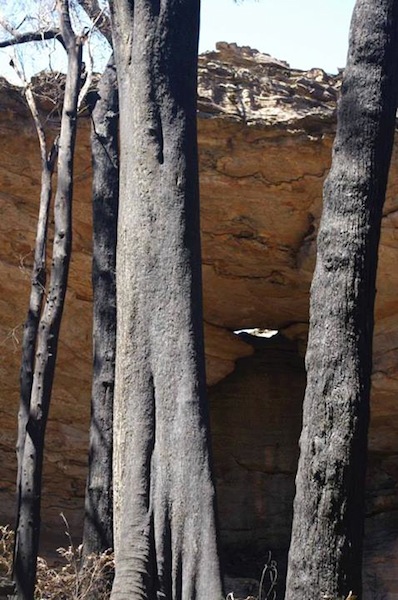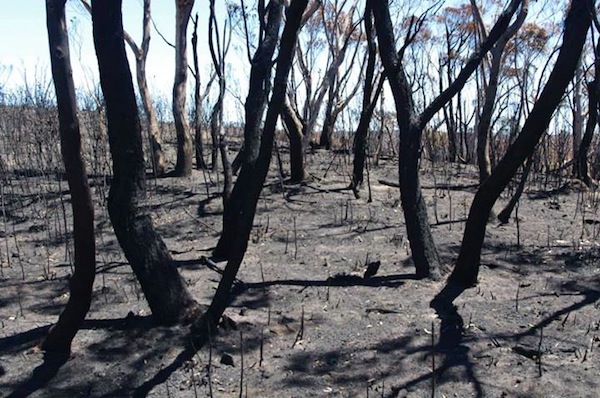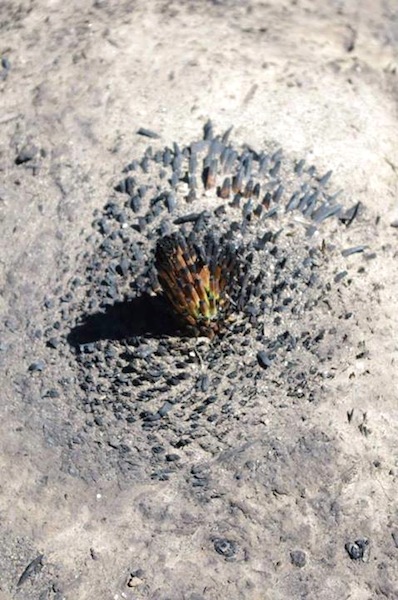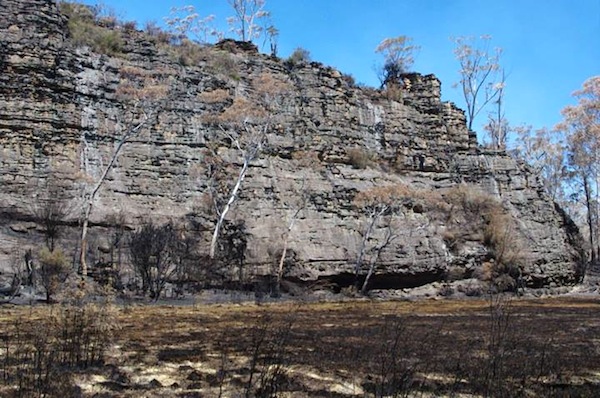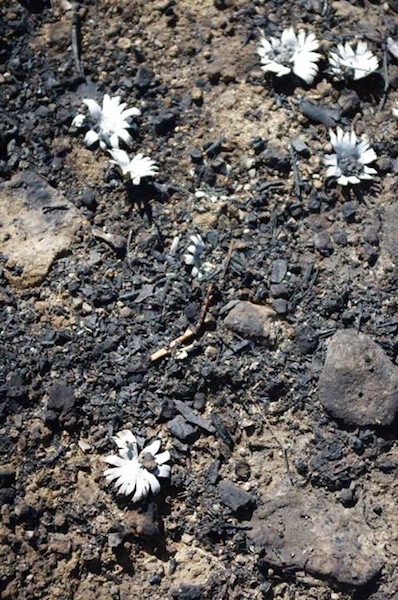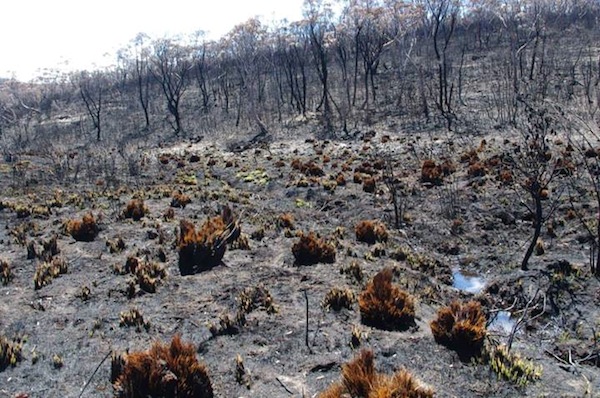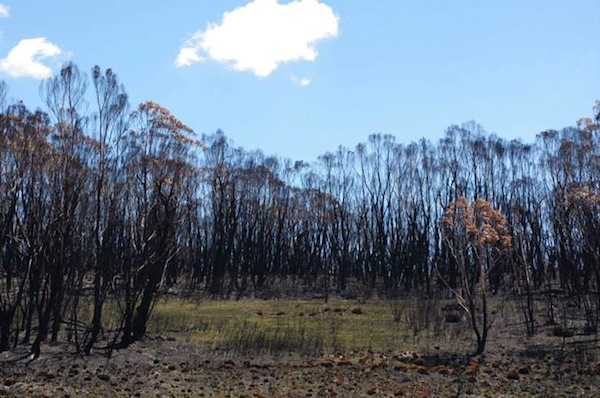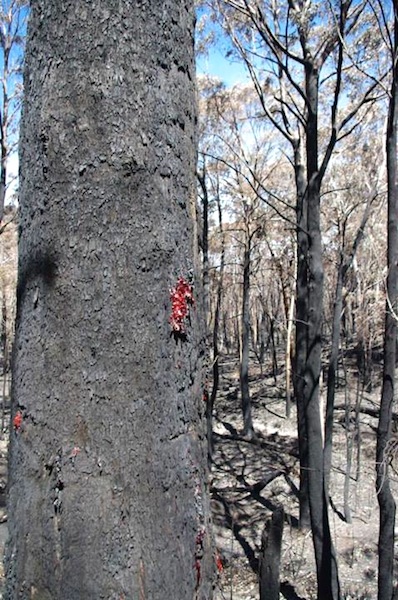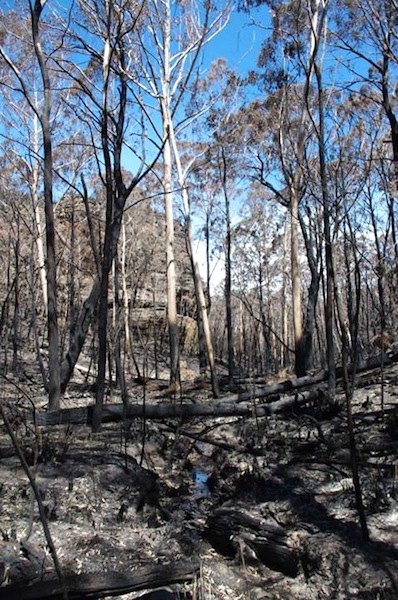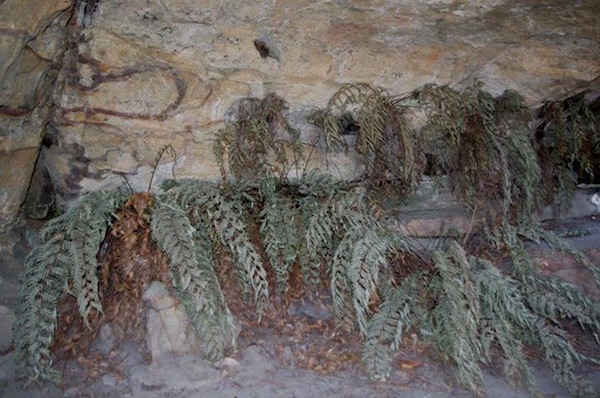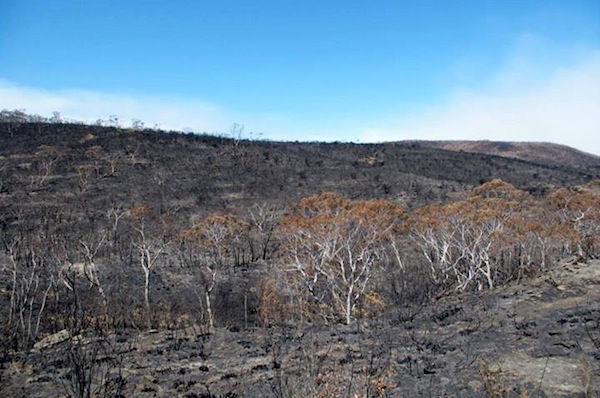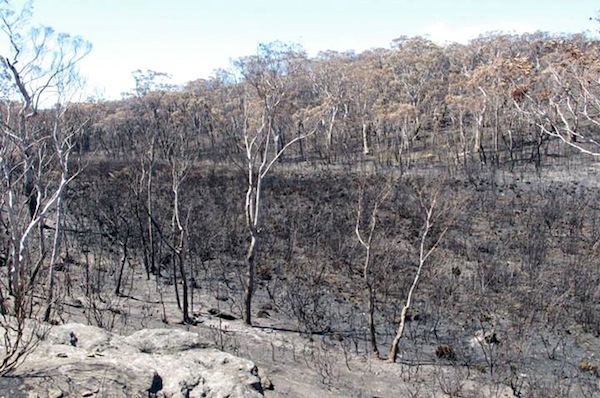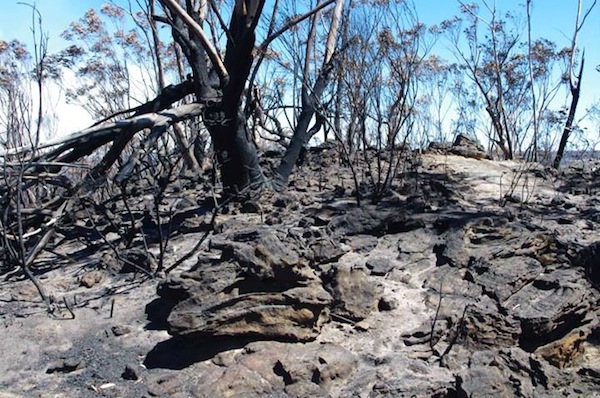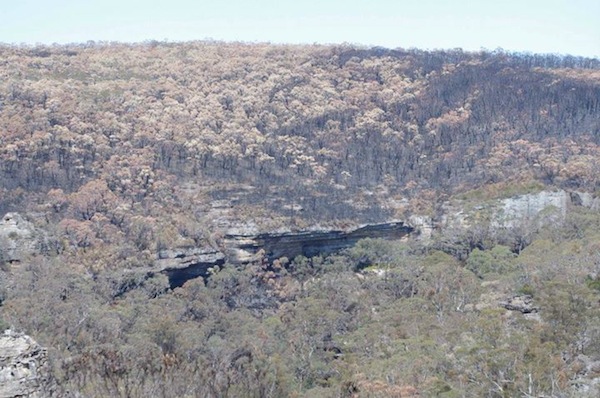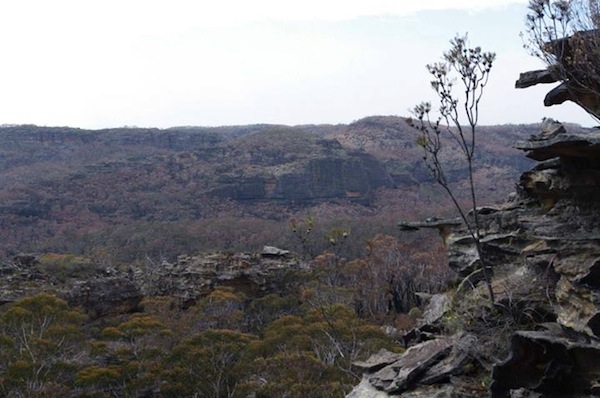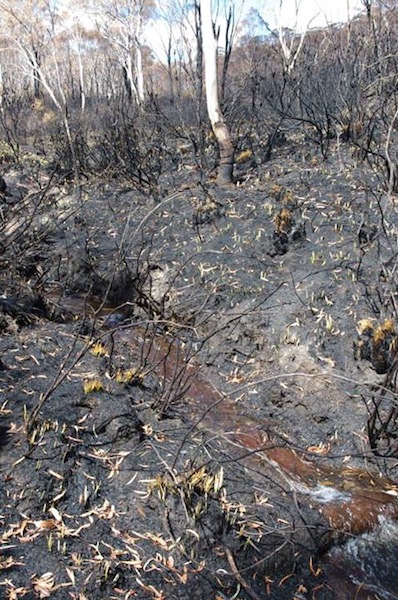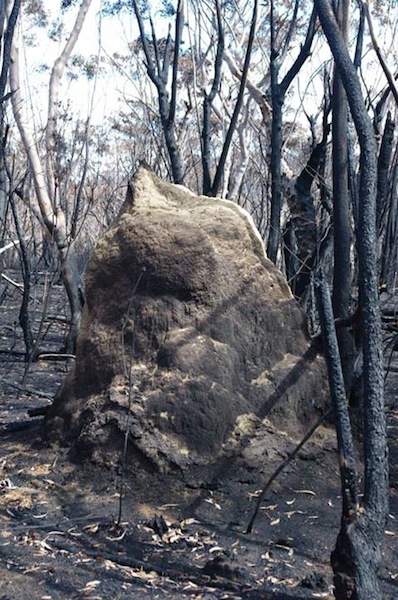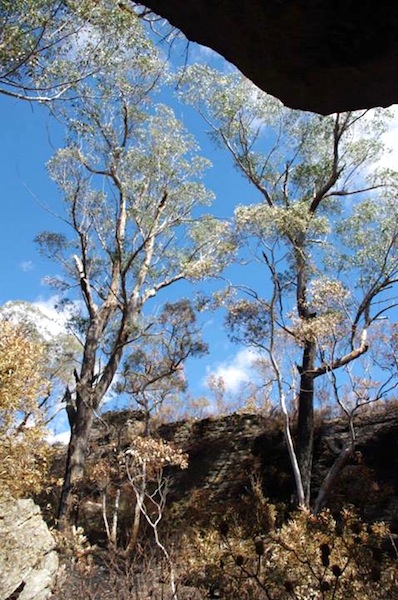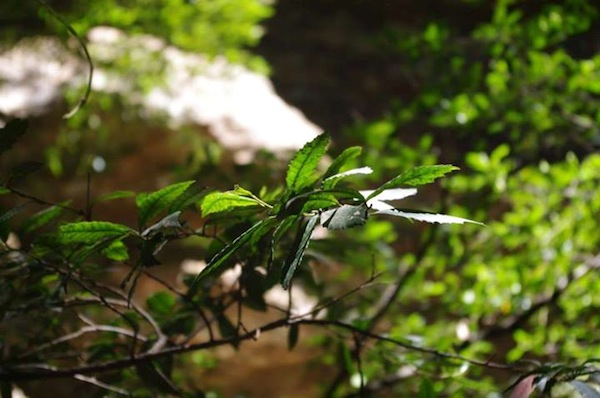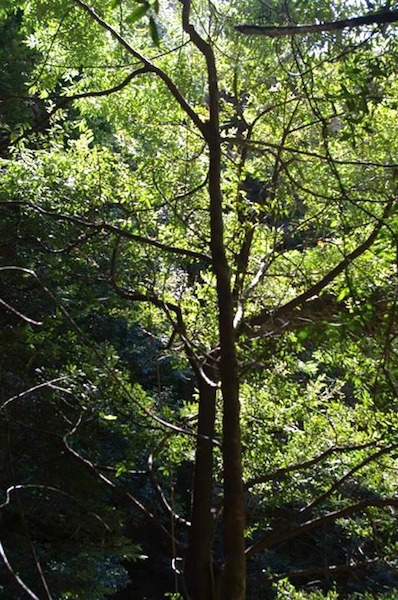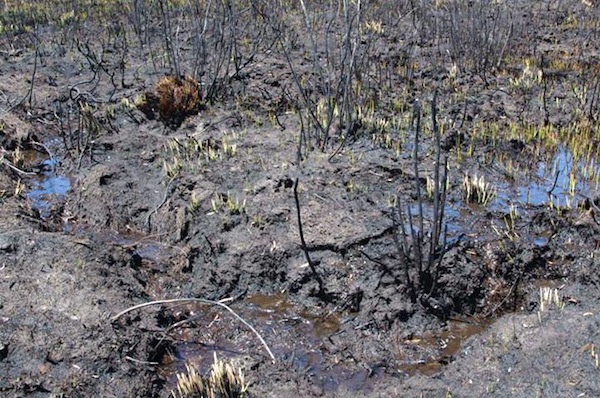When massive bushfires raced through parts of the Blue Mountains last month, wilderness areas on the Newnes Plateau and in the upper Wollangambe were among the areas worst hit. It was here that the fastest moving, hottest, most destructive parts of the Lithgow fire burnt.
While fire-impacted areas remain closed to the public — due to safety hazards and the need to protect the regenerating bushland — ecologist and bushwalker Roger Lembit has been continuing his work in the area. He has been studying the Newnes Plateau for more than three decades, including the impacts of the last big fire in the region in December 1997.
Roger has kindly shared some of his photos, taken over several visits to the area in recent weeks, which show the impact of the fire and the small signs of recovery already beginning to show.
He reports that the recent rain, which was steady and soaking, has really helped. As a result many grasses and eucalypts have already started resprouting. This is in contrast to the last major fire in the area, after which there was an intense rainfall event which caused significant erosion and nutrient loss.
Roger also described conditions at Goochs Crater as being like “a wet desert”, with plenty of moisture underfoot ensuring the swamp should recover more quickly than after the 1997 fire.
However the intensity of this fire means even the rocks, including stunning pagoda formations, have been blackened, weakened, and damaged. With the addition of rainfall, which softens sandstone, they are extremely sensitive to trampling.
Further north, along the Dumbano Fire Trail ridge and slopes, this latest fire has left very few unburnt patches of shrub. However, while the leaves in the tree canopy have been scorched, there are only small patches where fire has actually consumed the canopy leaves. Again this is in contrast to the previous fire where there were significant areas where the leaves in the canopy were totally consumed by fire.
Other positives include that the swamps and moist areas high in the catchment have started greening, there has been almost no deep impact on peat sediments in the swamps, and there is more groundwater than in 1997, all of which bode well for the ability of the bush to recover quickly.

